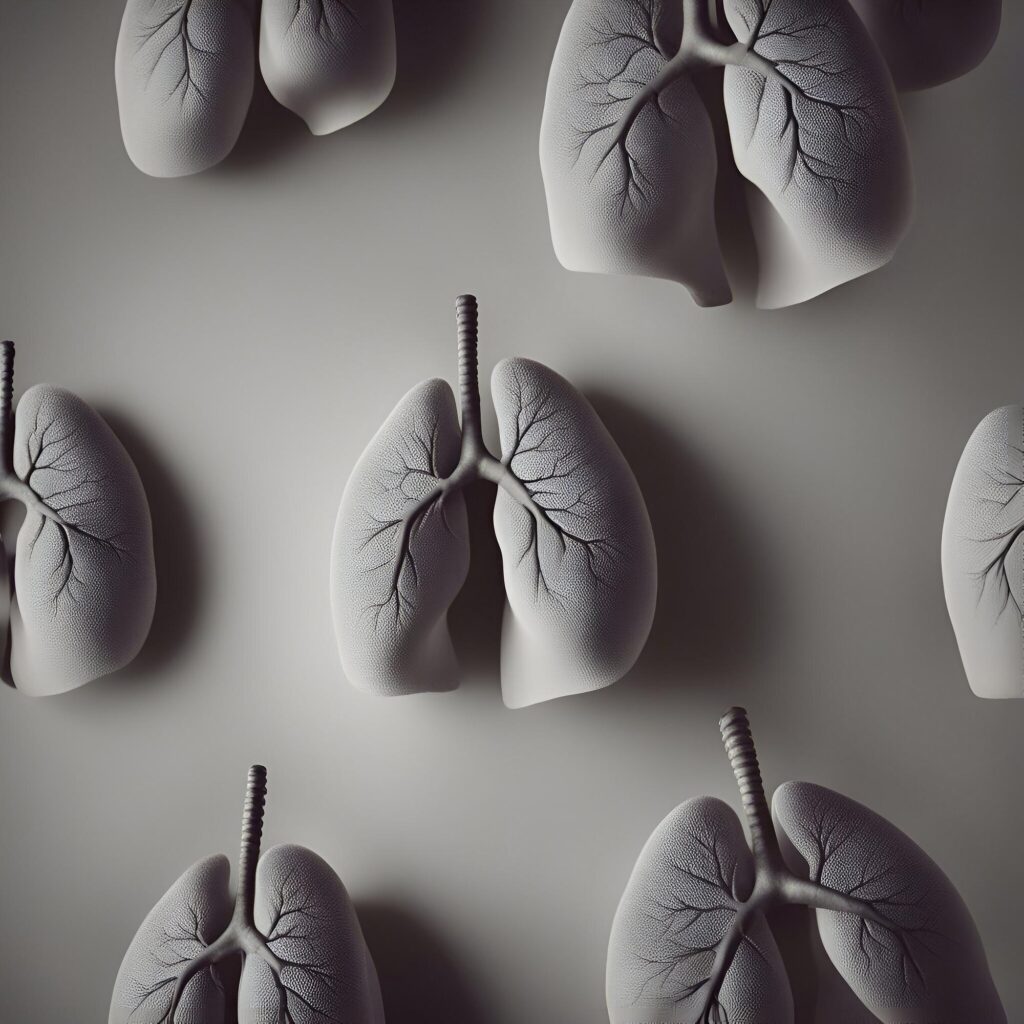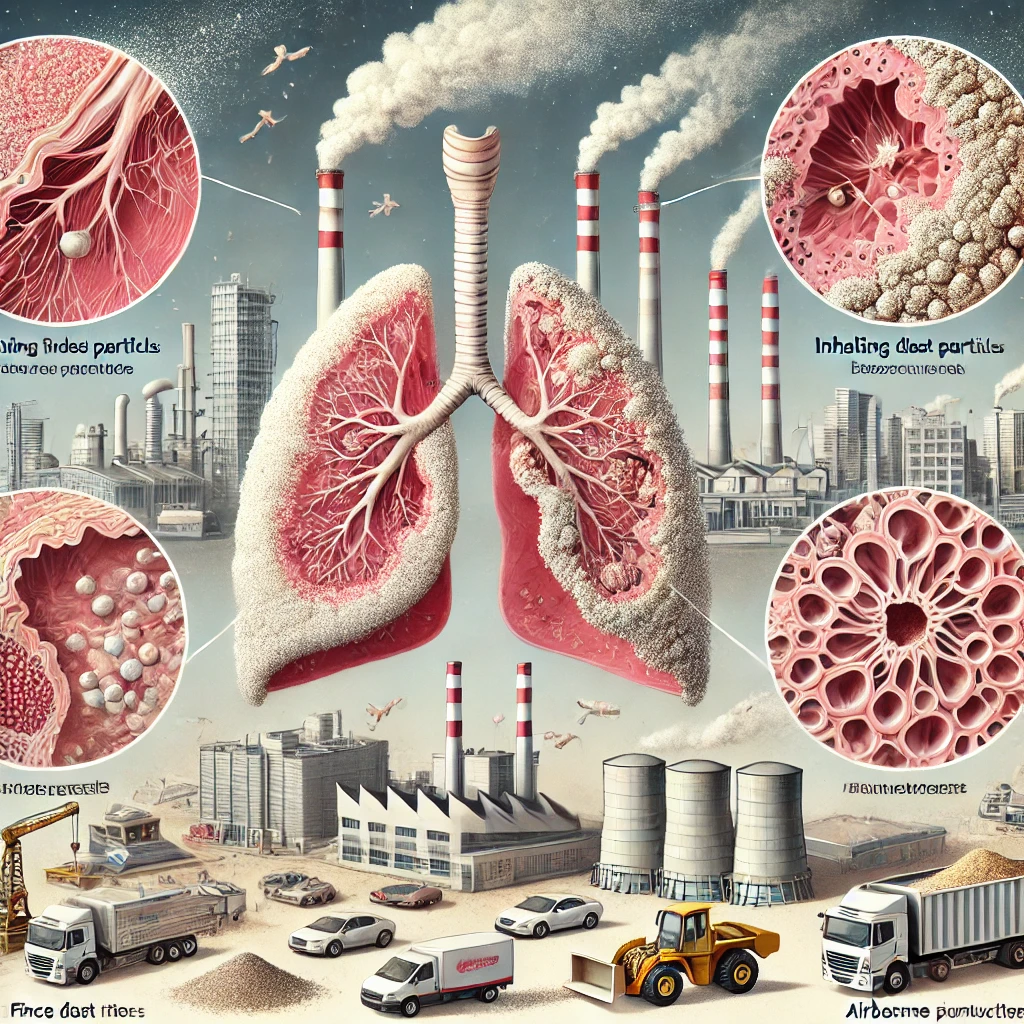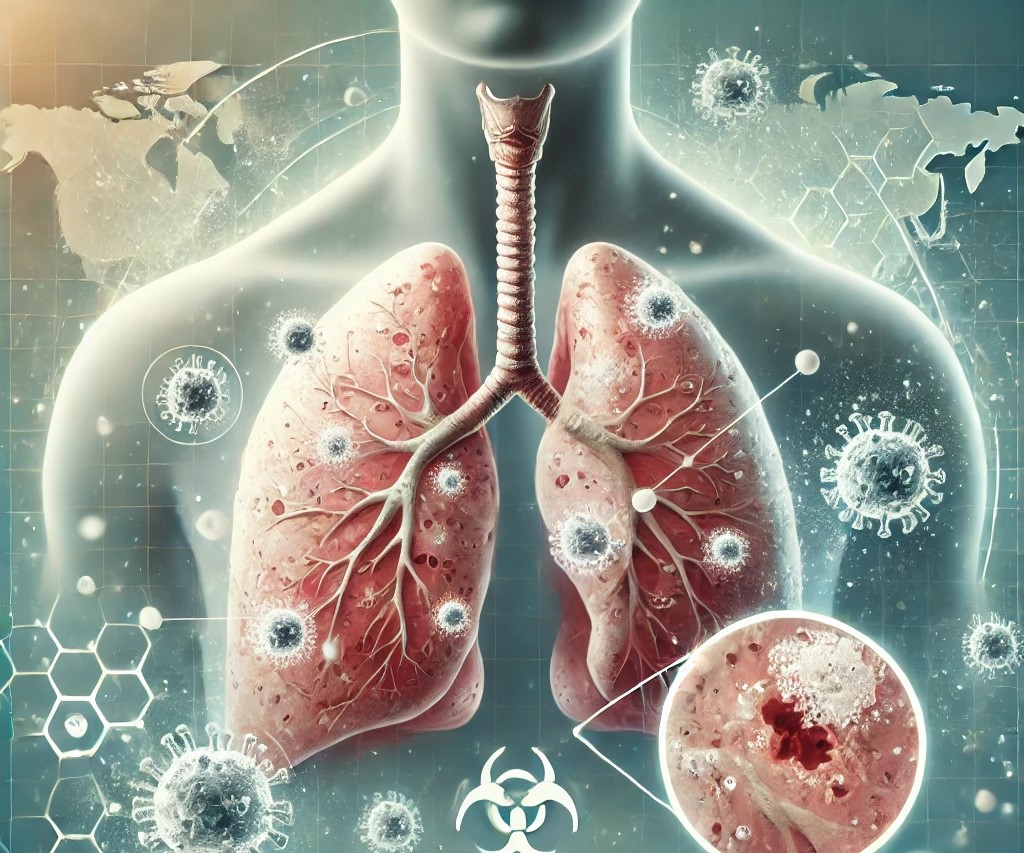
White lung pneumonia, or pneumonitis, is an acute respiratory disease with known serious health impacts associated with certain occupations and environmental exposures. What separates this condition, in part, is the association with specific exposures and its propensity for mortality if not identified and treated early. In this article, we will explain what white lung pneumonia is and examine some of its causes, symptoms, potential risks, prevention methods, and whether it is contagious.
Understanding White Lung Pneumonia

White lung pneumonia refers to a type of lung infection and inflammation often linked to prolonged exposure to airborne irritants, especially in industrial or environmental settings. The term “white lung” comes from the unique look of the lungs on a chest X-ray, where affected areas appear white or hazy due to inflammation. This condition results from intense scarring and irritation in lung tissue, typically from inhaling dust, fibers, or chemicals that harm the respiratory system.
Unlike common bacterial or viral pneumonia, white lung pneumonia is often occupational, affecting those in workplaces with high exposure to irritants. However, it can also develop in people exposed to similar environmental pollutants outside of work.
Causes of White Lung Pneumonia

White lung pneumonia develops mainly from prolonged inhalation of fine particles and irritants. Below are the key causes:
- Occupational Exposure: Certain jobs expose workers to dust, fibers, or chemicals that, when inhaled over time, can lead to serious respiratory issues. Industries like mining, construction, textiles, and agriculture present higher risks, with common irritants including silica, asbestos, cotton dust, and mold spores.
- Environmental Particle Inhalation: People living in areas with high pollution levels can inhale airborne particles from sources like car exhaust, industrial emissions, and construction sites. Over time, this exposure can irritate lung tissue, raising the risk of white lung pneumonia.
- Allergens and Molds: Individuals sensitive to specific allergens may experience inflammation after exposure to pollen or mold in poorly ventilated spaces. In agricultural settings, inhaling mold from hay, grains, or other organic matter can lead to a condition known as “farmer’s lung,” which mirrors white lung pneumonia symptoms.
- Chemical Irritants: Exposure to chemicals such as ammonia or chlorine can damage lung tissue, causing inflammation and scarring. Workers in industries using these chemicals regularly are at a heightened risk of white lung pneumonia if safety measures aren’t strictly observed.
Symptoms of White Lung Pneumonia

The symptoms of white lung pneumonia can range in severity based on exposure levels, the type of inhaled particles, and the individual’s health. Here are some of the most common symptoms:
- Persistent Cough: A chronic, dry cough is often one of the first signs, becoming more frequent and pronounced over time.
- Shortness of Breath: As lung inflammation worsens, individuals may find breathing difficult, especially during physical exertion.
- Chest Pain: Inflammation in the lungs can lead to chest discomfort or even sharp, localized pain.
- Fatigue: Reduced oxygen intake due to impaired lung function can make patients feel excessively tired and fatigued.
- Wheezing and Crackling Sounds: Abnormal sounds, such as wheezing or crackling, may be heard during breathing, sometimes even without a stethoscope.
- Fever and Chills: In severe cases, the body may respond to the inflammation with fever and chills.
Symptoms tend to appear gradually, often leading individuals to overlook or dismiss them until the condition has advanced significantly.
Risks Associated with White Lung Pneumonia

White lung pneumonia can pose serious health risks, especially when untreated. Here are some of the potential long term complications:
- Chronic Respiratory Disease: White lung pneumonia can progress into chronic conditions like Chronic Obstructive Pulmonary Disease (COPD) or pulmonary fibrosis, where lung tissue thickens and scars, permanently impairing lung function.
- Lung Scarring and Reduced Function: Ongoing inflammation can cause irreversible scarring in lung tissue, reducing lung capacity and making breathing increasingly difficult. This limits physical activity and can severely impact quality of life.
- Higher Susceptibility to Infections: Damaged lung tissue leaves patients more vulnerable to infections, such as bacterial or viral pneumonia, as the lungs’ natural defenses become weakened.
- Elevated Lung Cancer Risk: Prolonged exposure to particles like asbestos or silica is linked to a higher risk of lung cancer. Individuals working in high risk environments are especially vulnerable without adequate protection.
- Reduced Oxygen Levels: Advanced white lung pneumonia can lower blood oxygen, leading to hypoxemia, which may impact vital organs, including the brain and heart.
Prevention of White Lung Pneumonia
Preventing white lung pneumonia is crucial, especially for those in high-risk work environments. Here are some effective strategies to help reduce the risk:
- Protective Equipment: In workplaces with significant dust, chemical, or fiber exposure, workers should wear suitable personal protective equipment (PPE), such as masks, respirators, and eye protection. Masks with HEPA filters are particularly effective at blocking fine particles from reaching the lungs.
- Ventilation: Proper ventilation systems in workspaces help lower airborne particle concentrations, which minimizes lung irritation and inflammation risks.
- Regular Health Check-ups: Consistent medical check-ups enable early detection of respiratory problems, allowing for prompt intervention. For workers in high risk fields, lung function tests and chest X-rays are often advisable.
- Hygiene and Decontamination: Thorough cleaning after shifts helps remove dust or chemicals from skin and clothing. Industries like mining and construction benefit significantly from stringent decontamination practices to prevent particle accumulation.
- Smoking Cessation: Smoking can worsen lung conditions and increase vulnerability to respiratory issues. Avoiding smoking is especially important for individuals already exposed to airborne irritants.
- Adherence to Safety Protocols: Employers in dust- or chemical-heavy industries should follow rigorous safety standards, such as limiting exposure times and ensuring that PPE is available. Strict adherence to occupational health guidelines is essential in lowering white lung pneumonia risks for workers.
Is White Lung Pneumonia Contagious?

A common question about white lung pneumonia is whether it’s contagious. Unlike bacterial or viral pneumonia, white lung pneumonia isn’t caused by an infectious organism. Instead, it stems from long-term exposure to irritants that inflame and damage lung tissue.
Because white lung pneumonia is triggered by environmental or workplace exposures, it is not contagious and cannot spread from person to person. However, without proper protective measures, others exposed to similar environmental or occupational risks may develop similar symptoms.
Diagnosis and Treatment of White Lung Pneumonia

Diagnosing white lung pneumonia involves a detailed review of the patient’s medical and occupational history, along with imaging studies like chest X-rays or CT scans to identify lung inflammation and scarring. Pulmonary function tests may also be used to determine the extent of lung impairment.
Treatment is centered on managing symptoms and preventing further lung damage. Key treatment options include:
- Medications: Anti-inflammatory drugs, bronchodilators, and steroids are commonly prescribed to ease inflammation and improve breathing.
- Oxygen Therapy: For severe cases where oxygen levels are low, oxygen therapy can help the patient breathe more comfortably.
- Lifestyle Adjustments: Patients may need to avoid exposure to lung irritants, which could mean changing jobs or seeking less hazardous work environments.
- Pulmonary Rehabilitation: This includes physical exercises, breathing techniques, and other therapies to improve lung function and manage symptoms effectively.
Conclusion
White lung pneumonia is a serious respiratory condition primarily resulting from prolonged exposure to environmental or occupational irritants. Unlike contagious forms of pneumonia, it’s caused by inhaling fine particles, dust, chemicals, and other substances that lead to lung inflammation and scarring. Although preventable with proper precautions, untreated white lung pneumonia can progress to chronic lung diseases, diminished lung function, and other significant health complications.
For individuals in high-risk fields, understanding the causes, symptoms, and potential dangers of white lung pneumonia is essential. By following safety protocols, scheduling regular health screenings, and minimizing exposure to lung irritants, one can greatly reduce the risk of developing this debilitating condition. Prevention is the most effective way to safeguard respiratory health and avoid the long term impact of white lung pneumonia.

